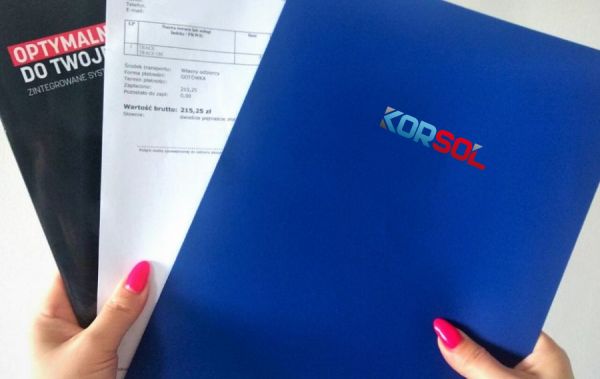Let us present below the 5 main causes of documentation flow difficulties.
1. Many sources/entries
Documents usually do not access the company through only one channel: they come with traditional mail, are sent through emails or delivered by employees of different departments. Entirely different is in turn, the path of writings which are destined for the immediate inspection of the board. A large percentage of the documents circulating all over the company is drawn internally. It is all natural, however the more sources of documentation inflow or preparation, the harder it is to control them. They often reach wrong destinations, are passed between the departments and may be lost or stay in one place for too long.
But it does not take much effort to fix the problem: just ordering the employees to scan every document while it reaches the company and to immediately save it in the corporate IT system. The data acquired through email can bypass the stage of printing and scanning which is extremely profitable both for the company and the environment. The system is able to assign the documents to a specific position in the register as well as a unique number. An employee then puts it into the right category of cases. The information required will be much easier to find and e-documents may be stored in one place.
2. Lack of tools to collect and transfer data
Even the most disciplined employee will drown in papers if he is not able to communicate properly with the rest of departments. A sufficient documentation flow in the company will result, above all, in a fast information exchange. Lots of companies already have a well-developed IT environment, eg. all sorts of corporate communicators, however, they do not use them in order to rationalize and facilitate the work with documents.
The company must acquire a system through which one might clearly indicate:
- When and where from was the document delivered,
- Which department is responsible for it,
- What is the launch date of a given procedure and what is the deadline,
- Who must the document be handed to for acceptance,
- What is the whole procedure of document flow.
Such measures allow us to avoid unnecessary physical journey of documents between departments. And if it is unavoidable – we have clearly stated stages of realization of the relevant case and localizing documents becomes very easy. The workflow procedure also significantly shortens the time of task realization, as there is no responsibility shedding between departments.
See our teamwork management article for projects involving multiple departments.
3. Disappearing documents
It is the nightmare of every company. No matter how precisely and carefully the documentation is prepared, its excess always guarantees loses. What is more, if the writing is going to wander between departments and it requires acceptance of several supervisors, the risk of getting stuck drastically rises. Nervous search for the lost documents rarely results in finding the actual maker, hence the whole responsibility is forced on an innocent courier. Which, eventually, is not even close to compensating the loss of time and does not guarantee that there won’t be similar cases in the future.
Having an efficient document flow channel in the company remains a significant security measure. If every paper document has its own electronic duplicate (as long as it was printed at all), losses become barely possible. company created a type of traceability for documents just to eliminate the physical journey of documents. At any time the user is able to search for a document using its name or number, trace its way back and identify the department it is stuck in.
4. No electronic signature
Document digitalization will not be quite as effective, if the e-documents are not of the same importance as the paper versions. If the writing must come with a sufficient seal or signatures, the procedure of drawing them takes the same amount of time. Hence, most employees question the effectiveness of IT systems of company management, because they are never able to completely replace the traditional methods of office work.
Here the electronic signature becomes really helpful. It conquers all city departments, offices and even private apartments more and more intensively, as the citizens are able to operate their current affairs online. The company owner does not have to apply for government certificates for every employee separately so that their electronic signatures can function properly in corporate environment. IT systems equip the companies with a sufficient level of certificate security, so that different writings may be signed. The employee’s signature allows the editing block of the given document, which becomes another security measure and increases credibility of the writing. What is more, such a signature may also be specially designed to resemble real handwriting together with a personal seal – through that the document is ready to be printed (as long as the author allows it) and treated as signed physically.
Through these modern measures for the corporate electronic signature the credibility of documents, their security and validity in the eyes of administrative bodies is regained. On the other hand the whole procedure of signing is shortened to a great extent, because even in case of no acceptance of the board, the document instantly returns to the person that has drawn/accepted it.
5. No communication between departments
Each department is responsible for a part of corporate documentation and carries out its own correspondence. If there is no sufficient coordination of the departments and no proper communication between them, the documents usually reach wrong destinations and the work becomes disturbed. While the advertising correspondence may be stuck in a wrong department for a few days, invoices require a very fast reaction. Additionally the example of invoices is particularly important, because their circulation in the company is usually very long. Such a document must be initially described and then it is delivered to each department the purchase of which is noted in it. And here are two possible further codes of conduct:
- The invoice is passed to each respective department which considerably prolongs the time of case management,
- The invoice is copied for each department, the purchase of which is noted in it. The time of case management is much shorter, but the problem of multiple copies and risk of losing them arises. Finally, gathering all described copies back requires indicating one person responsible for them who devotes much of their time to such a task.
It seems that the topic of invoices gets very difficult for companies, especially when one document is drawn from different departments’ purchases. A properly constructed system is able to gather all actions taken within the invoice management procedure in one case, which all the departments are able to edit. The system indicates all responsible people to register the actions together with the workers, it saves enclosures and registers signatures. What is important, it also makes it possible to add comments and send notifications so as to facilitate the corporate communication even more.
Check out our Invoice circulation module to learn about our solutions.
Customization
The document circulation is certainly one of the most common organizational problems in companies. It is worth mentioning that particular attention must be paid to this aspect of work, because it has considerable impact on efficiency and speed, which consequently improves the company image and finally rises the income. Investment in IT systems will not change much though, if the company does not put emphasis on tailored solutions and customization. IT environment must be secure and easy to use at the same time. It should be created basing on needs analysis and individual character of the company. Finally, the modules should be dedicated to particular departments with properly attuned structure, workflow procedure and custom documents.
Consequently, for document circulation enhancement, it is very important to choose systems carefully, so it fulfils certain needs instead of delivering general-purpose but ineffective tools. Only that way the investment will result as intended and will actually facilitate employees’ work.
Feel invited to learn more about modules created by company, which specialises in integrated IT systems tailored to clients’ needs, including those responsible for documentation flow and communication enhancement between corporate ERPs.
See also: our new traceability product TraceON.






